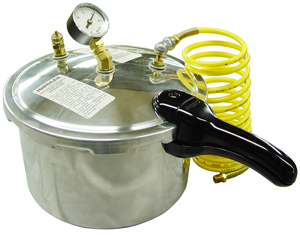Implementing systems that scale with practice growth
By Amber Collins
There is a world of difference between operating a single dental practice and running a successful multi-location organization; a truth that many organizations who failed to shift their mindset as they grew learned the hard way.
Fortunately, the Peak Dental leadership team had that insight at the very start of our expansion efforts. Expanding a small dental practice starts by implementing systems to grow just that one practice. When Peak was still a small practice, our biggest focus was on supporting the doctors and learning everything that we could about how to run a dental practice.
At the three to five location mark, we realized the more that we were looking to scale, the more we had to have consistency across locations.
It’s important to think about if your management practices and processes that will work for a handful of locations are also going to hold up work for 40 or even 100 locations.
We think a lot about culture and people, and how to continue to scale those two along with our systems, processes and trainings.
Hiring the right people
One tentpole of Peak Dental’s success is the group’s hiring practices and mindset. We typically look for people who have a good attitude and who are capable of receiving feedback.
This may be surprising, but industry experience is not always a requirement. We tend to hire a lot of people who have no dental experience because it’s not necessarily the dental experience that matters in leadership especially in our organization. It’s really [those] people who are going to take opportunities and learn along the way and grow.
Managing a company’s human resources can be a challenge, especially when an organization is actively expanding. My advice? Try to figure out where your organization’s biggest “pain points” are. Identify what is taking up the most of your time that could be spent on things that you know are going to grow your business.
Standardized training
One of the key ways that Peak Dental creates and provides organization-wide consistency is by implementing a standardized training program. Sometimes, the best way to make sure a training program is tailored to your organization’s specific needs is to make it yourself.
Peak Dental’s leadership created the TOM, or “Top Office Management” program.
Everyone in the front office goes through it, including patient coordinators and treatment coordinators. But it really focuses on how to manage a practice, how to grow a practice, how to take care of your patients, and how to lead the team within that practice.
It’s really been a process now that we’re working on virtualizing all of our trainings, but we offer over 125 hours of proprietary CE within our organization. We also offer third party leadership training that we send a lot of our top 15 of the management team through, and we’ll cycle through all of our providers that go through that and then anyone else in an office management role and up.
But having a thorough, standardized training program is only half of what makes Peak Dental’s system work. It’s just as important to pace that training in a way that recognizes new hires’ limits. We don’t want to overwhelm them with so many systems and ways of doing things that people are frustrated or you don’t see the results that you want from doing that. So it also involves a lot of onsite training. It’s not just, ‘You’re going to go through this one-day seminar and you’re going to know what you need to know and be done. The last thing you want to do when acquiring an office is to give them a bunch of instructions and then just say, “Sink or swim.”
Goals
It’s impossible to successfully grow a practice if you don’t have an end goal in mind.
With any sort of goal-setting, it has to be attainable, and you also need to be able to provide predictable results for your business. Your goals should align with what’s predictable and actually attainable.
But that doesn’t mean setting an “easy” goal. It means having all your systems and processes in place that will lead you to a target. It means that when you’re setting your budgets or thinking about what your revenue goal for the next month or year is, that it’s just as important to be a predictable business.
When it comes to growing a practice, there are seemingly innumerable goals to shoot for. So which metrics should you prioritize when it comes to measuring the success of your growth?
For Peak Dental, the one of the most important indicators of success is patient retention rates. Do you have people coming back? Do they like you? Do they want to continue to see you? Patient retention really is a combination of a bunch of things, but when we’re actually tracking it, it’s going to be information that we’re pulling from our data warehouse. It’s the loyalty of the patients that matters.
Amber Collins is Chief Operating Officer for Peak Dental Services, which has been recognized as one of Inc. Magazine’s “Top 5000 Fastest Growing Companies” for three years in a row. Amber has extensive knowledge of operations in the dental field and has been dedicated to the growth to Peak Dental Services since 2009.
For the past several years, her focus has been on building and growing teams, as well as growing and scaling operations, building a positive culture, training teams by designing, writing and implementing incentive training programs, and coaching and developing teams to support growth.
Amber started at Peak Dental when it was still a single location and has been with the company every step of the way as the organization scaled up to the nearly 40 locations it supports today.






